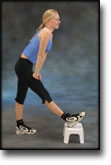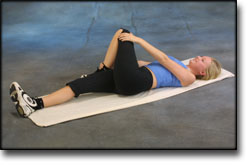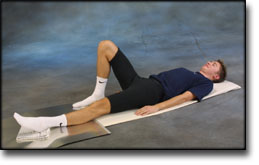|
Results of reconstruction of acute ruptures of the anterior cruciate ligament with an iliotibial band autograft.
Bak K, Jorgensen U, Ekstrand J, Scavenius M. Knee Surg Sports Traumatol Arthrosc 1999;7(2):111-7.
Forty patients with an acute complete tear of the anterior cruciate ligament (ACL) underwent primary reconstruction with an iliotibial band autograft after median 15 (range 0-90) days. Objective and functional evaluation was performed after median 37 (range 24-87) months by two independent observers using the International Knee Documentation Committee (IKDC) knee evaluation form, the Lysholm knee function score, and the Tegner activity score. During the observation period 5 patients sustained an ACL tear in the contralateral knee, and 1 patient (2.5%) sustained a graft rupture and underwent re-reconstruction. For the remaining 34 knees the Lysholm score at follow-up was median 100 (range 84-100, mean 97 [+/- 4]), all patients scoring excellent (n = 28) or good (n = 6). Three patients (9%) had more than 3 mm side-to-side difference in anteroposterior laxity. All 4 ligament failures occurred in patients operated on within the first 2 weeks after the injury. Twenty-six patients (76%) returned to the same level of activity as prior to the injury. Of 8 who dropped to a lower activity level, only one ascribed this to problems with the operated knee, meaning that 26 of 27 (96%) returned to their desired level of activity. According to the overall IKDC evaluation, 14 patients (40%) had a normal knee (A), 13 (37%) had a nearly normal knee (B), 5 (14%) had an abnormal knee (C), and 2 (9%) had a severely abnormal knee (D). Ten patients (25%) had the staples removed due to local irritation, and further 6 (15%) had local symptoms from the tibial staples. The harvest site gave 8 (20%) patients cosmetic complaints, but all graded this as slight, and 3 (8%) had slight pain during activity from the lateral muscular hernia. In selected individuals performing vigorous knee activities, autologous reconstruction of acute ACL disrupted knees with a combined internal and external iliotibial band transfer demonstrates excellent results after median 3 years. The failure rate is comparable to other techniques.
|




















































